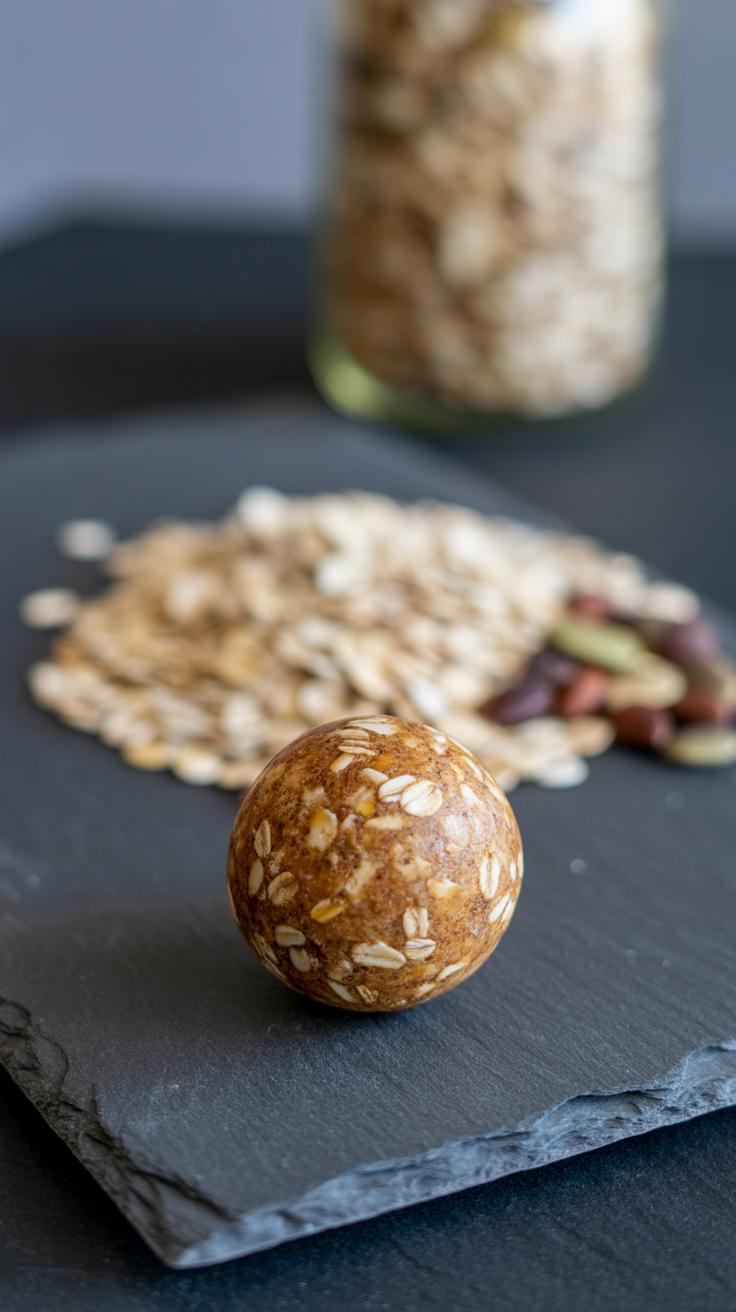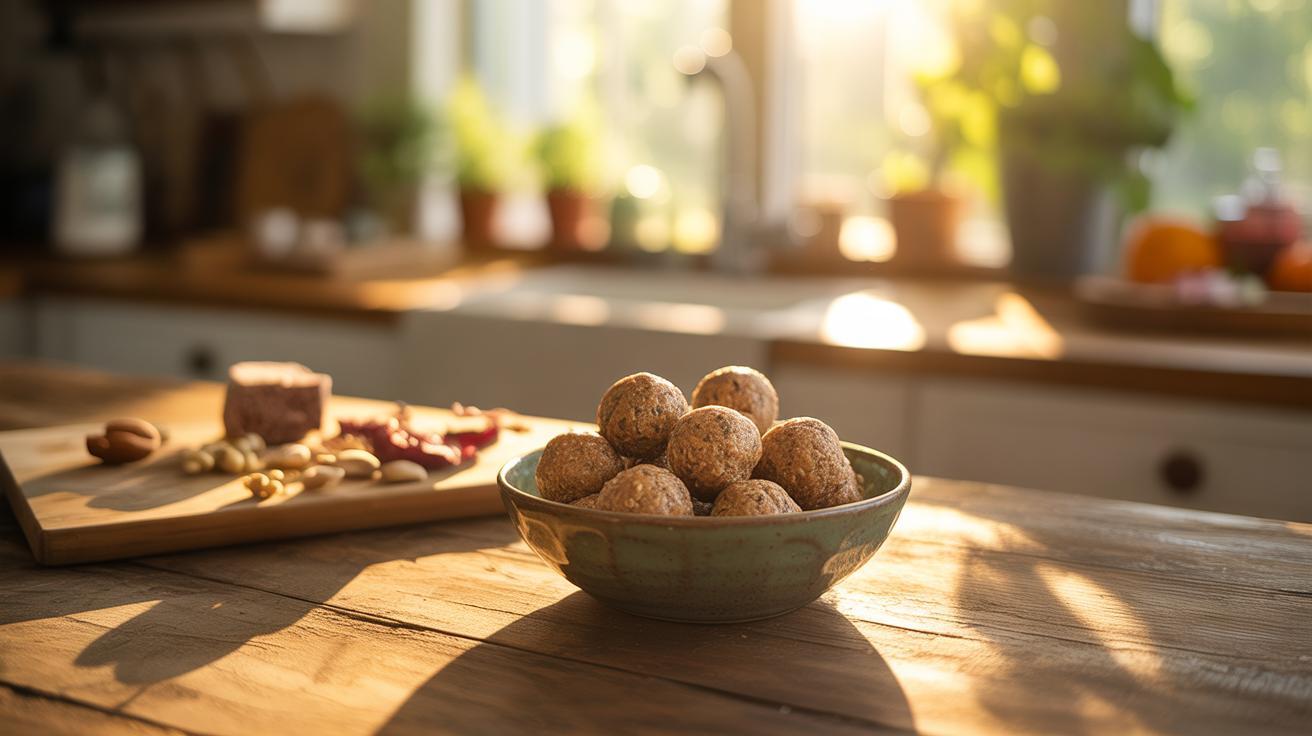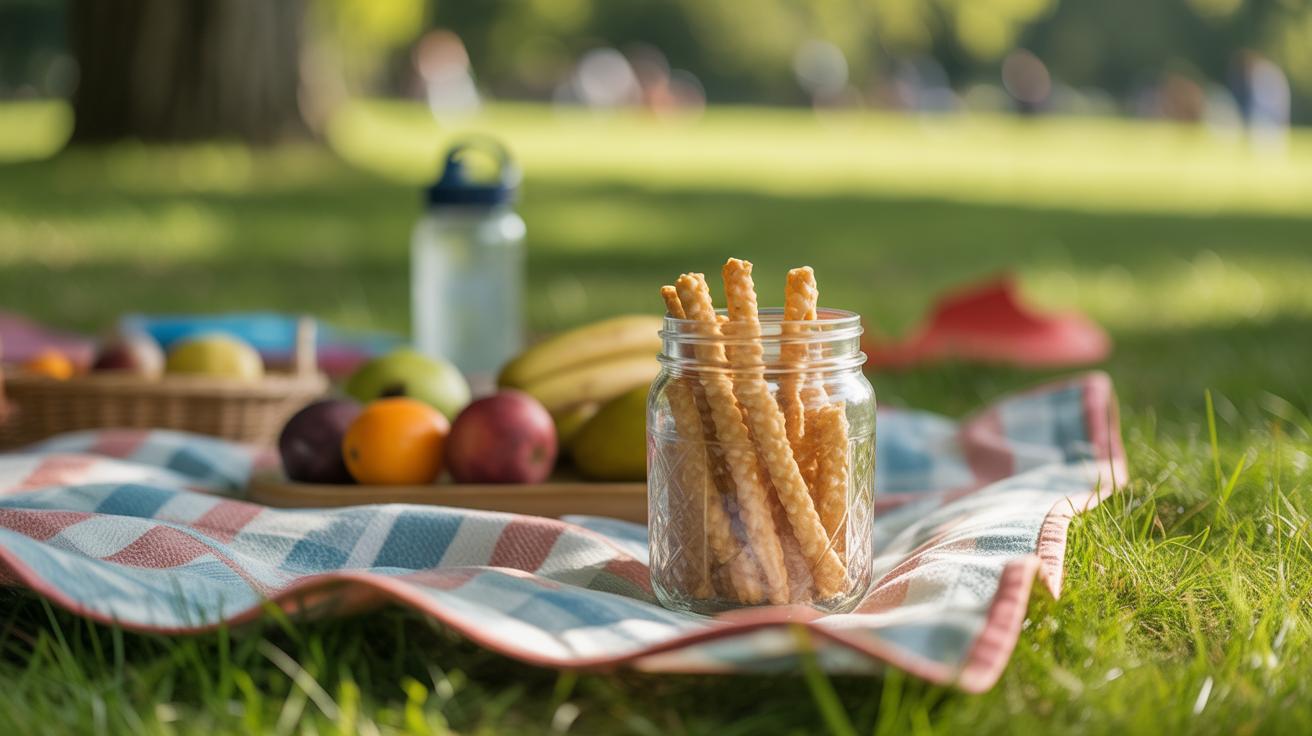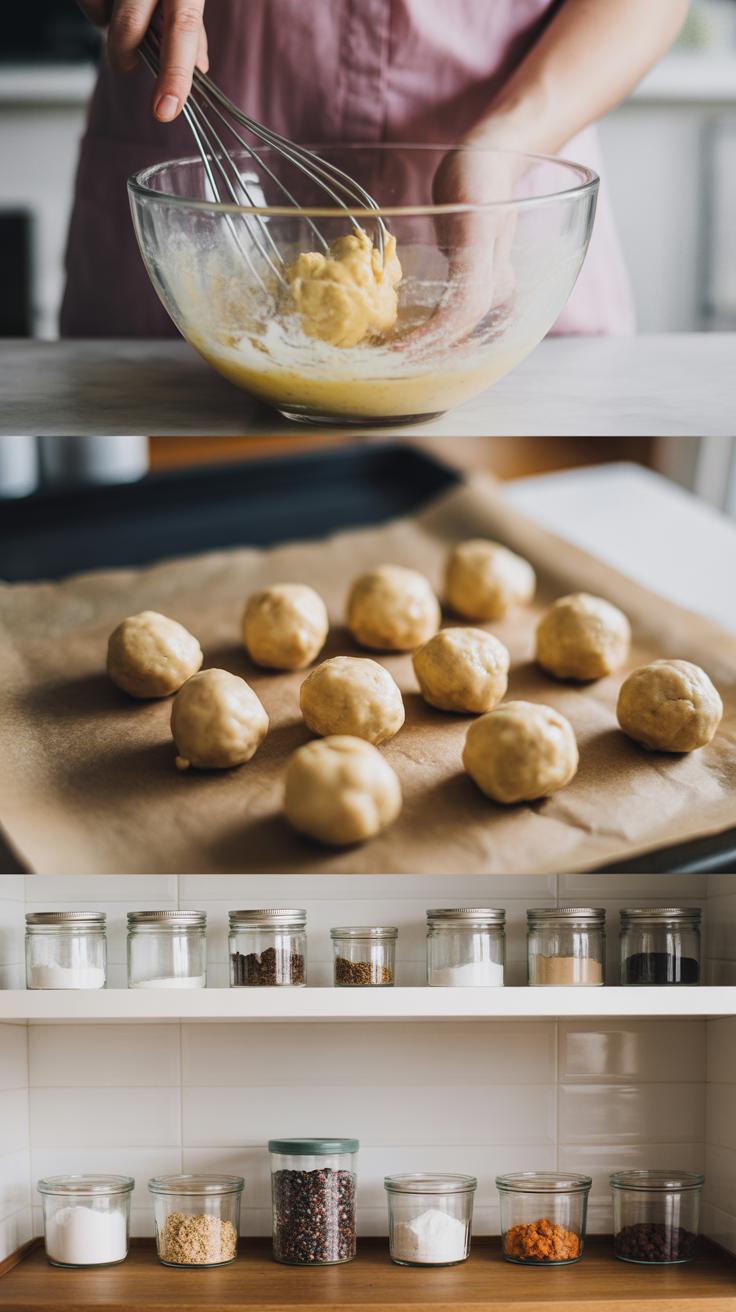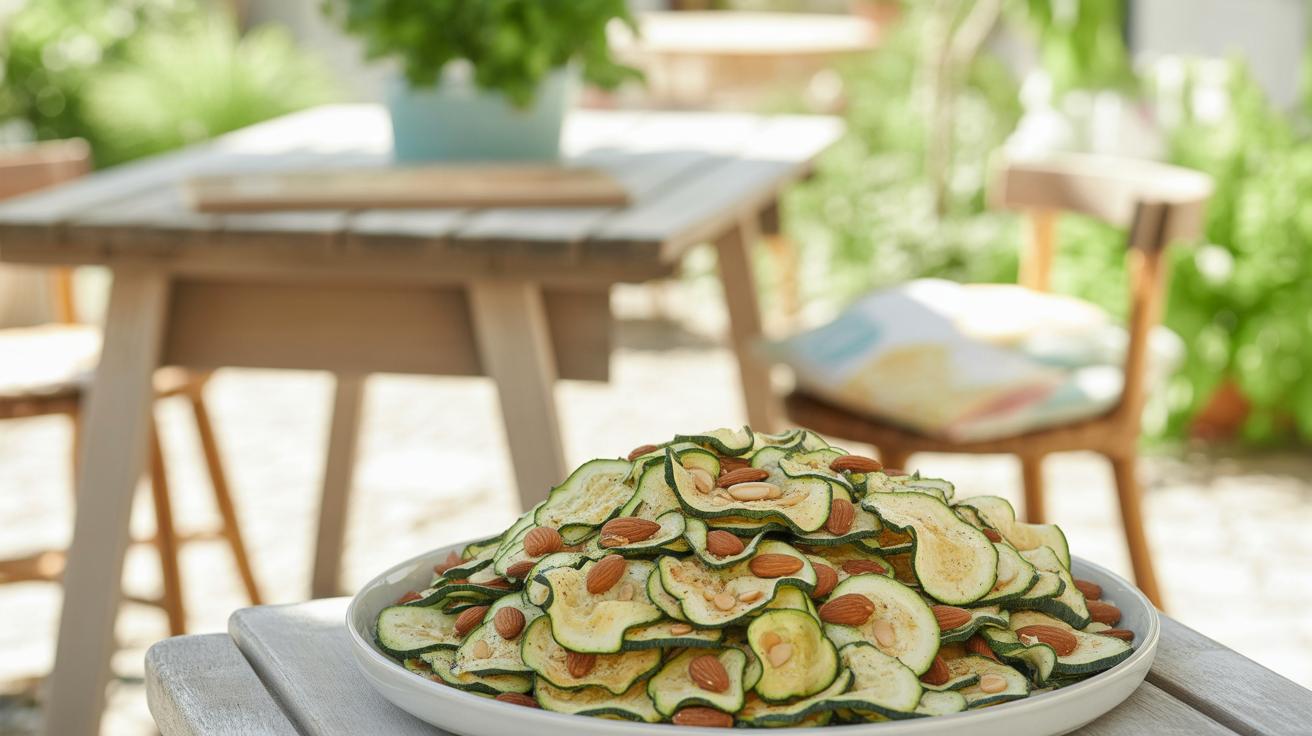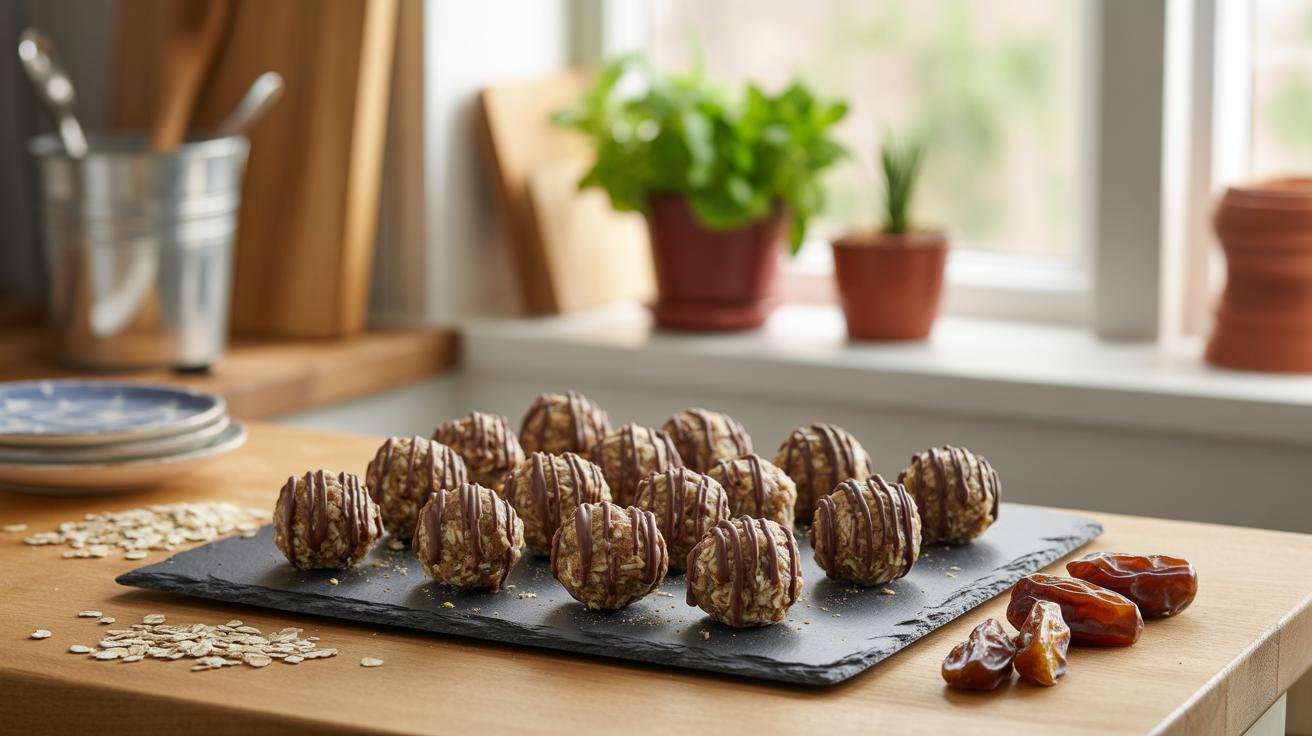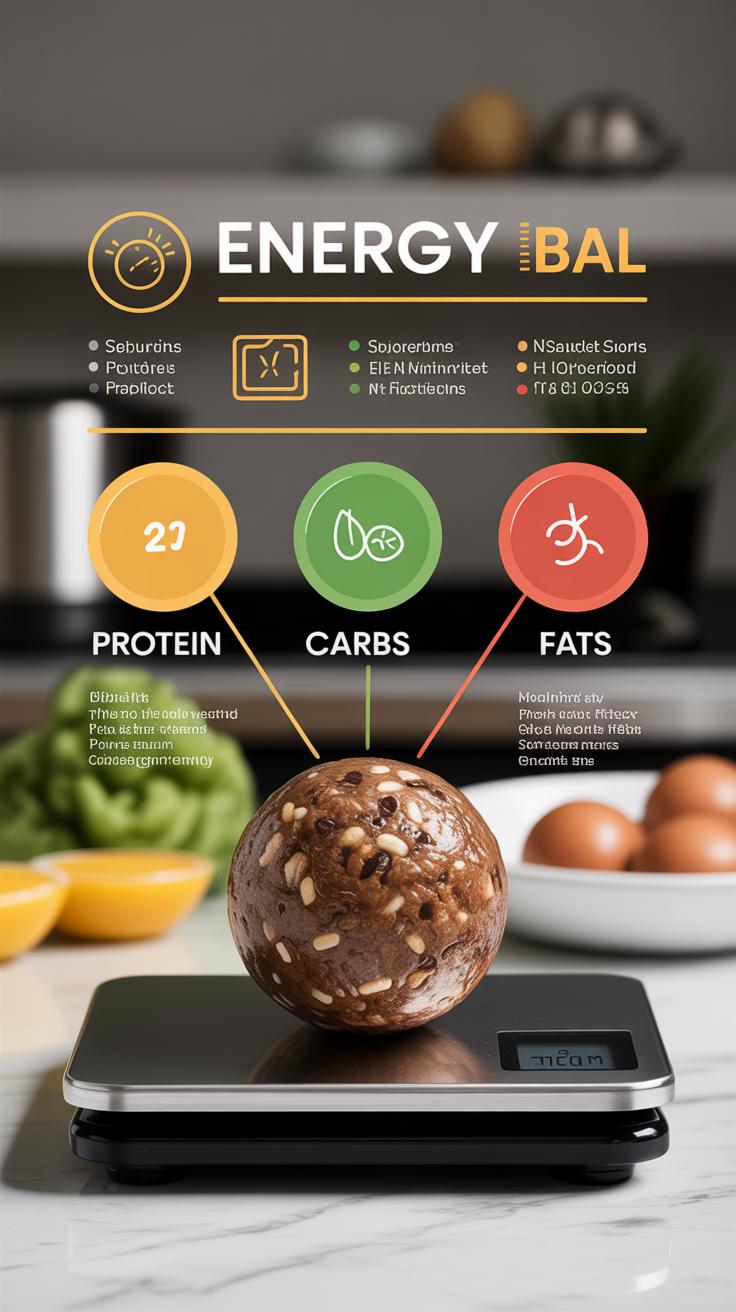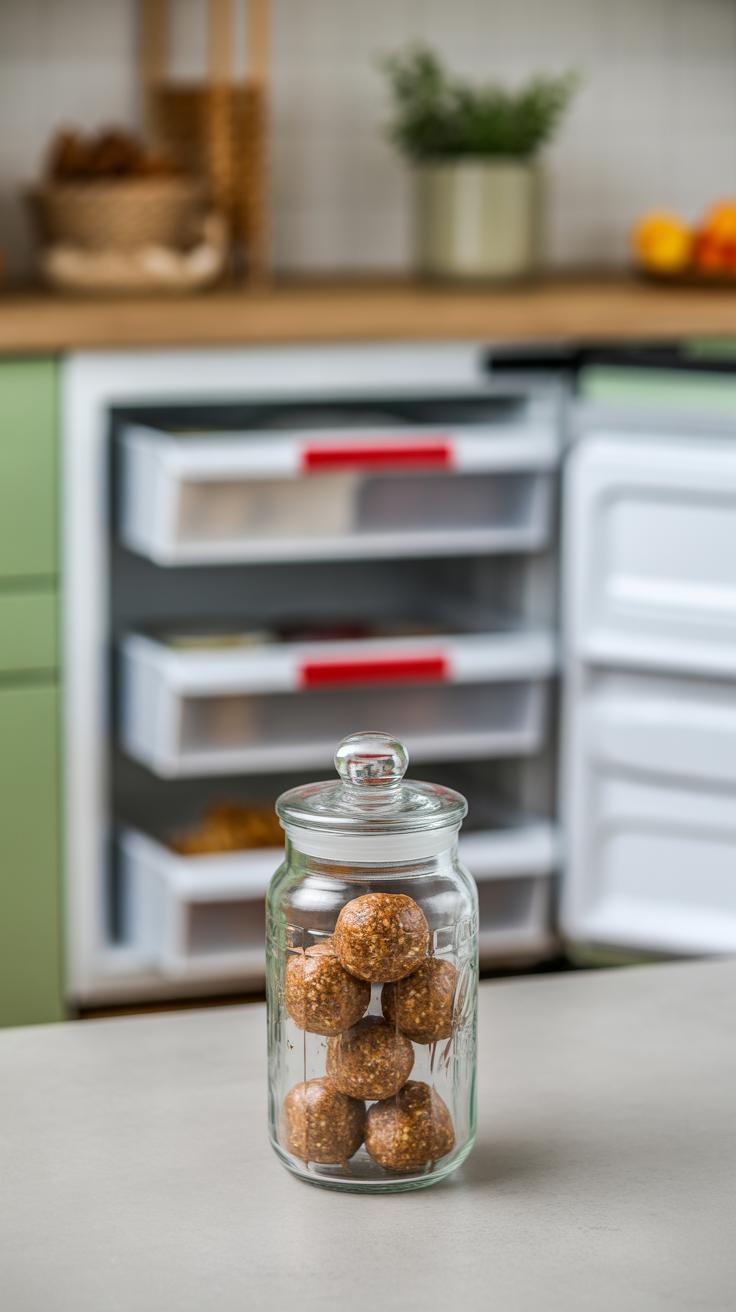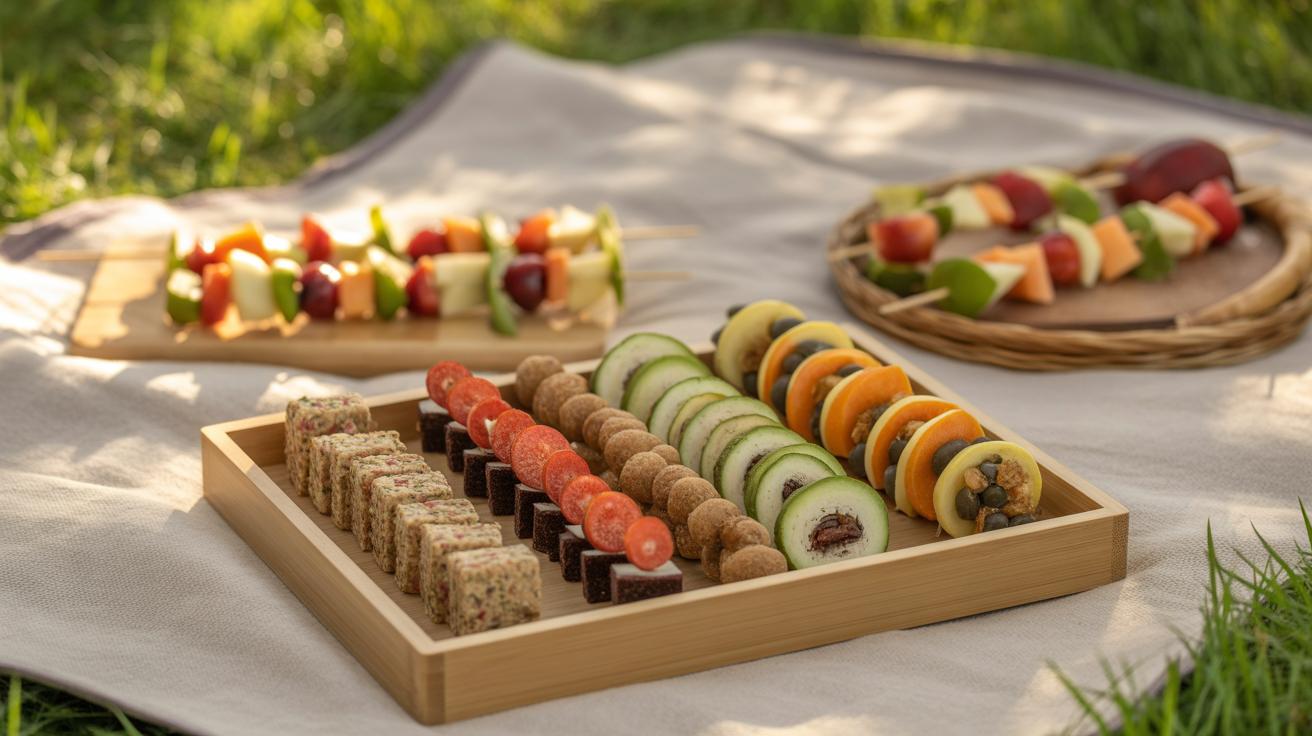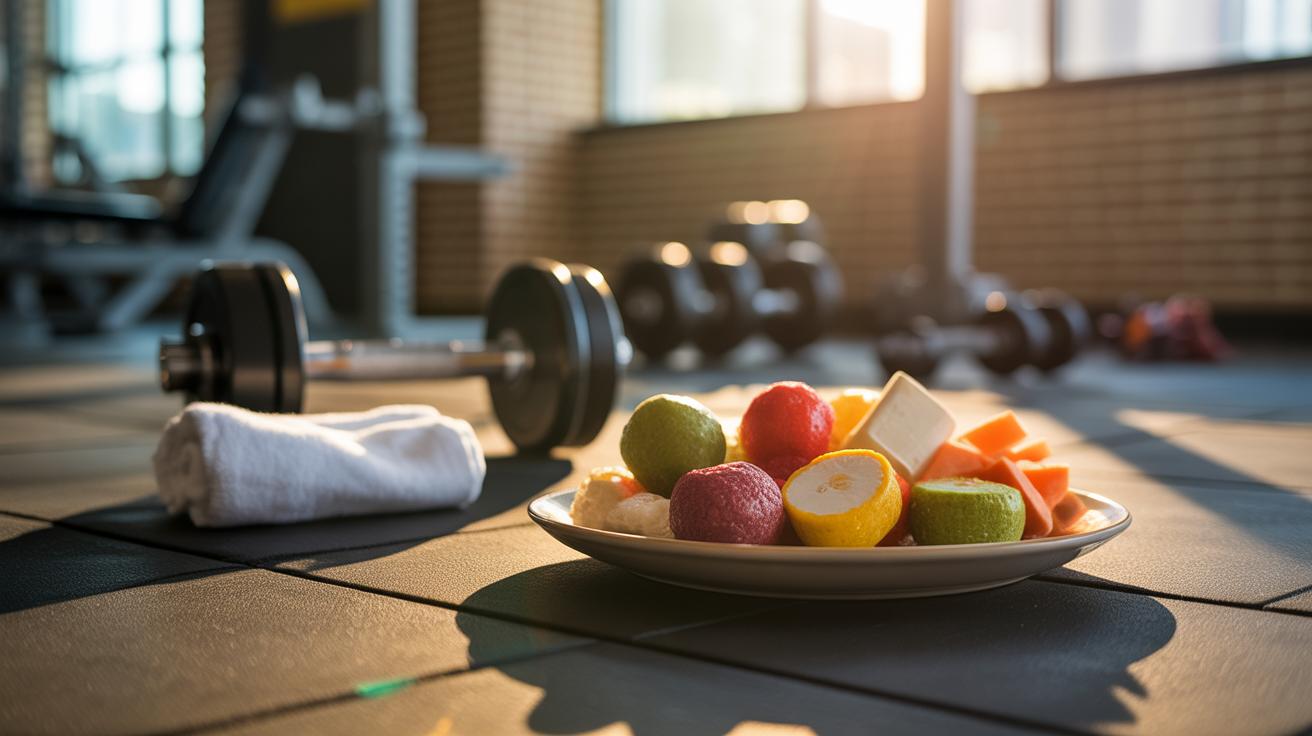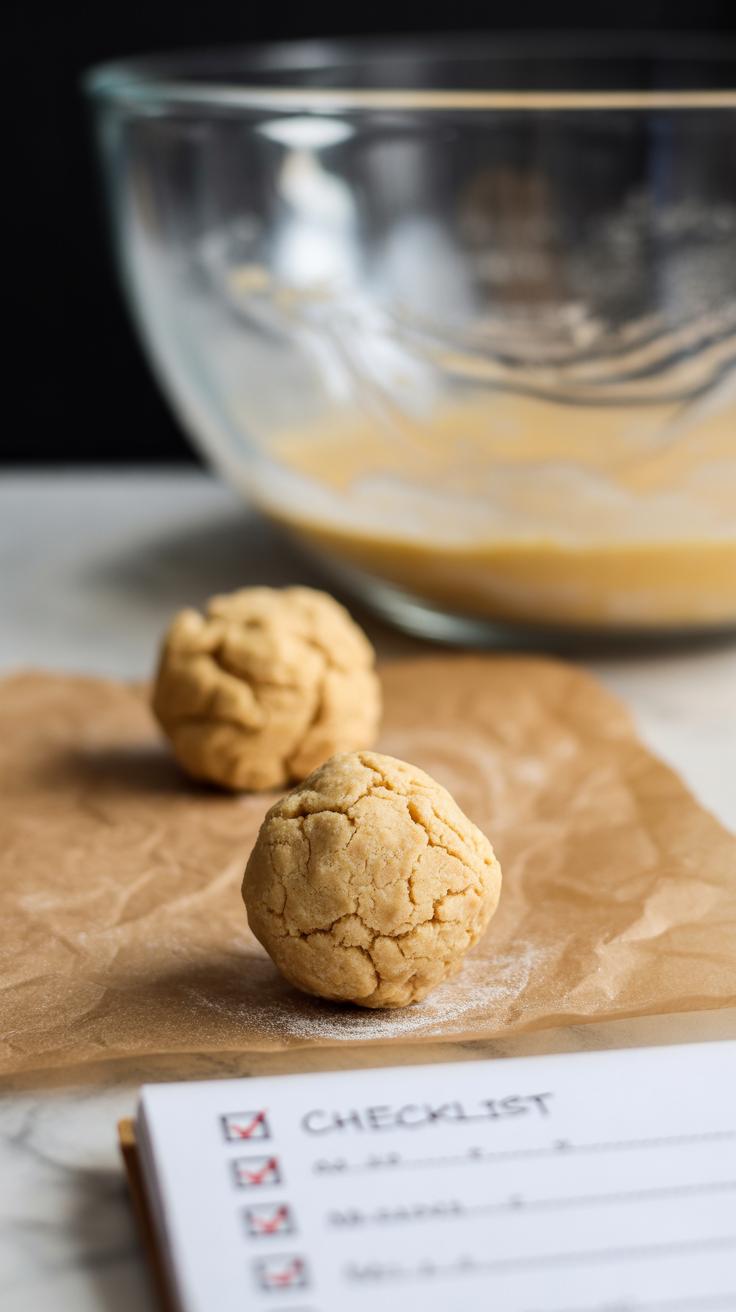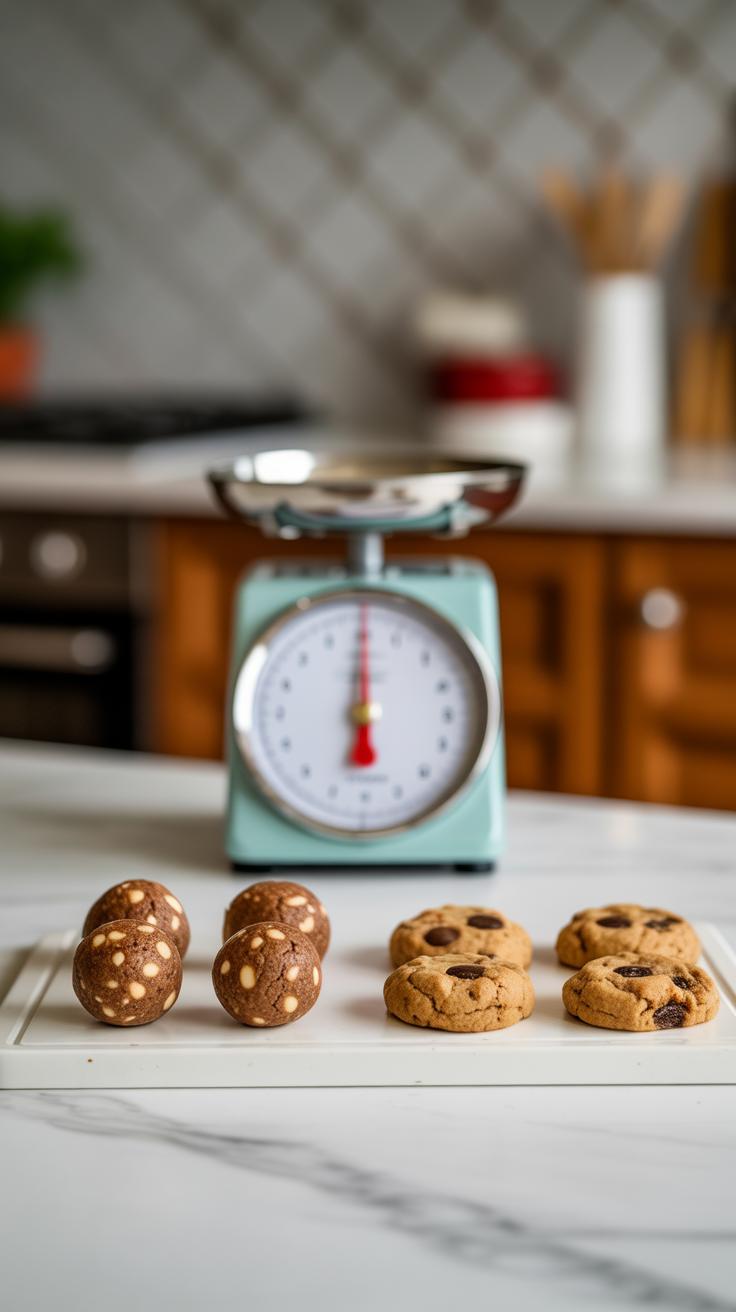Introduction
Energy balls are small, bite-sized snacks packed with nutrients. They are easy to make and perfect for giving you a quick boost of energy during your day. These wholesome snacks combine natural ingredients like nuts, seeds, and dried fruits to fuel your body and keep you active.
In this article, you will learn how to make energy balls that are healthy and tasty. You will also discover the benefits of including them in your everyday diet. By the end of the article, you’ll feel ready to make your own energy balls at home and enjoy the instant boost they provide.
Understanding Energy Balls And Their Benefits
What Are Energy Balls
Energy balls are small, bite-sized snacks made by mixing various natural ingredients like nuts, seeds, dried fruits, and sometimes oats or protein powders. You’ll usually find them about the size of a walnut, soft enough to bite into easily but firm enough to hold their shape. Their texture tends to be chewy, sometimes a little crunchy depending on what’s inside.
They often don’t require baking, which makes them quick to prepare. People make them in many ways, but the core idea stays the same—a compact, nutrient-rich ball you can grab on the go. It’s almost like a concentrated package of energy and nutrients, ready whenever you might need a lift.
Advantages Of Eating Energy Balls
Why choose energy balls? Well, they serve several purposes beyond just tasting good. For one, they give you a quick energy boost without the crash you might feel after sugary snacks. That’s because they mix carbohydrates, healthy fats, and protein that digest at different rates, balancing your energy release.
They’re great when you need to keep hunger at bay between meals but don’t want to feel weighed down. This makes them popular with busy people—whether you’re rushing to work or between workouts. Plus, they often pack in vitamins, minerals, and fiber from natural ingredients, which can be surprisingly nourishing for what seems like such a small treat.
You might wonder if they’re just another trendy snack, but many who rely on them swear by the sustained energy and satiety they provide. Still, tastes will vary. Some find them a bit dense or overly sweet if the recipe leans too much on dried fruit or syrup. So, it’s not a one-size-fits-all answer, but they’re definitely worth trying if you’re curious about healthier snacking that actually works.
Choosing The Right Ingredients For Your Energy Balls
Popular Ingredients And Their Roles
When making energy balls, you will often find nuts like almonds, cashews, or walnuts forming the base. They bring healthy fats and protein, which help keep you full longer. Seeds such as chia, flax, or pumpkin add crunch and extra nutrients like omega-3s and fiber. Dried fruits—including dates, raisins, or apricots—act as natural sweeteners and give that chewy texture that balances the crunch.
Sweeteners, though often optional, can enhance flavor; raw honey or maple syrup are common choices. Binding agents play a crucial role too—nut butters or mashed bananas often hold everything together better than plain water or oil, but it depends on the mix you prefer.
Tips For Selecting Fresh And Healthy Ingredients
Choosing fresh and clean ingredients makes a noticeable difference. Organic options usually have less pesticide residue, though they’re sometimes pricier. When picking nuts or seeds, go for those without added salt or oils. Freshness is key—older nuts taste bitter and dry out the texture. Dried fruit should be free from preservatives or added sugars; check the label closely since some packages sneak in sulfites or sweeteners.
Honestly, even if you’re on a budget, look for bulk bins at local stores. You can smell and sometimes taste the product before buying, which beats guessing from a sealed bag. Trying a few different brands or types might feel tedious, but your taste buds will thank you later. Do you find one ingredient makes a big change in your energy balls? I think little tweaks can surprise you.
Step By Step Guide To Making Energy Balls
Preparation And Mixing
Start by measuring out your ingredients carefully. Dry items like oats, nuts, and seeds should be roughly chopped or ground for better texture. You don’t want large chunks dominating the mixture, but some crunch can be good. Soft ingredients—think dates, nut butter, or honey—need to be at room temperature to blend smoothly.
Use a bowl or food processor to mix. If you use a bowl, combine the dry ingredients first, then add wet ones gradually. Stir well with a sturdy spoon or spatula until the mixture holds together when pressed. If it feels too crumbly, add a bit more nut butter or a splash of liquid. Too sticky? A little extra oats or nuts helps balance it.
Getting the right consistency is a bit trial-and-error. You want a dough-like texture that’s firm but not dry. Sometimes mixing by hand feels best—you can sense when it’s just right.
Shaping And Storing Energy Balls
Forming the balls is pretty straightforward but can be fiddly. Scoop out enough mixture—about a tablespoon works well—and roll between your palms. Consistency in size means even bites and easier portion control. If the mix sticks too much, wet your hands lightly or chill the dough first.
Once shaped, place them on a lined tray or plate. Let them set in the fridge for at least 30 minutes to firm up. This also helps flavors meld a bit. For longer storage, airtight containers keep them fresh for up to two weeks in the fridge. If you want to keep them longer, freezing works fine but thaw before eating.
Storing properly is key. I often forget this step and find mine dried out too fast. You might want to label containers with dates, just to be safe. It’s a small detail but can save some disappointment later.
Variations To Customize Your Energy Balls
You can easily tweak energy balls to match your taste or dietary needs, and honestly, that’s part of the fun. Want a richer bite? Try stirring in cocoa powder or a sprinkle of cinnamon. I’ve found that adding shredded coconut not only ups the texture but brings a subtle sweetness that changes things quite a bit.
Crunch lovers aren’t left out either. Toss in chopped nuts, seeds, or even puffed quinoa for a surprising snap. Each addition brings a new layer, making your energy balls far from boring.
If you’re avoiding certain ingredients or following a diet, swaps are simple. Use maple syrup or agave instead of honey to keep it vegan-friendly. For gluten-free options, stick to oats labeled gluten-free or swap with ground nuts. And if cutting down on sugar is your thing, focus on natural sweetness from dates or figs alone, skipping added syrups.
Have you thought about trying sunflower seed butter instead of peanut? It’s allergy-friendly and changes the flavor slightly, but in a nice way. These variations let you create something that feels just right, without any guesswork or stress.
When And How To Eat Energy Balls
Perfect Snack Moments
Energy balls work best when you need a quick, steady boost. Think about those moments before you head out for exercise—they give you just enough fuel without feeling heavy. I’ve noticed that eating one or two about 30 minutes prior to a workout keeps my energy steady, not jittery or slow.
Then there’s the mid-afternoon slump, you know, when your focus starts to wane. Instead of just grabbing coffee or candy, a couple of energy balls can help bridge that gap. They don’t spike your sugar as sharply and seem to keep the afternoon drag away for longer.
Some people even use energy balls as a quick breakfast, especially when there’s no time to cook. One or two with a piece of fruit or yogurt can fill you up enough to hold off hunger through the morning.
Portion Control And Serving Tips
How many energy balls should you eat? It might depend on your day, but generally, one to three balls per serving feels right. Eating more can leave you a bit too full or slow you down, which defeats the purpose.
Instead of just popping them alone, try pairing energy balls with other foods. For example, crumble one on top of oatmeal or blend a ball into a smoothie for a bit of texture and flavor. They’re easy to mix into meals without much effort.
Also, store them in portion-sized containers or wrap them individually. That way, you avoid eating out of boredom rather than hunger. I’ve found that portioning ahead keeps me honest and more aware of why I’m reaching for a snack.
Nutritional Value Of Energy Balls
Energy balls pack a surprising nutritional punch for their size. Most recipes balance calories between fats, proteins, and carbohydrates, giving you a well-rounded mini snack. Take oats and nuts, for example—they bring a mix of complex carbs and healthy fats, usually around 100-150 calories per ball, depending on the size.
Breaking it down, you often get:
- Proteins: From nuts, seeds, or sometimes added protein powder. These help with muscle repair and keep you feeling fuller.
- Fats: Mostly unsaturated fats from nuts and seeds, which support brain function and sustained energy.
- Carbs: Usually slow-digesting carbs from oats or dried fruits, providing steady blood sugar levels.
- Vitamins and Minerals: Magnesium, iron, vitamin E, and B vitamins pop up thanks to ingredients like nuts, seeds, and oats.
These nutrients work together to keep your energy levels steady. Protein and fat slow digestion, which means energy is released gradually. That can help avoid the typical sugar crash you sometimes get after a sugary snack. I find energy balls surprisingly good at curbing hunger, too, so you’re less likely to overeat later.
Still, the exact impact varies with the mix you use. A ball heavier on dates feels a bit sweeter and quicker for energy, while those with more seeds and nuts tend to last longer in terms of satiety. Have you ever tried tweaking the ingredient ratios? It’s interesting how just shifting a little changes the whole experience.
Storing And Preserving Your Energy Balls
Energy balls can stay fresh for several days or even weeks if stored properly, but the way you keep them matters a lot. Since they often contain nuts, seeds, and natural sweeteners, these ingredients can spoil if exposed to heat or air for too long. The best approach is to keep them cool and airtight.
Refrigeration And Freezing Tips
For short-term storage, place your energy balls in an airtight container and refrigerate them. Ideally, the temperature should be around 35-40°F (2-4°C). This keeps them firm and stops bacterial growth while preserving their taste.
If you want to store them longer—say, a few weeks—freezing is a good option. Wrap each ball individually in parchment or wax paper before placing them in a freezer-safe container or bag. This prevents them from sticking together. I usually set my freezer around 0°F (-18°C), which keeps things stable without affecting the texture too much. When you’re ready to eat one, just thaw it at room temperature for 10-15 minutes.
Signs Of Spoilage To Watch For
It’s easy to fall into the trap of assuming energy balls are fine just because they look okay. But there are subtle clues that should make you pause. If they smell sour or rancid—especially a kind of stale nut or fermented smell—it’s time to toss them out.
Also, check for any visible mold spots, which can be white, green, or bluish. That’s a clear no-go. If the texture suddenly becomes slimy or unusually sticky (more than it usually feels), this often signals spoilage. The taste might shift too, sometimes becoming bitter or off-kilter.
Trust your senses—they’re usually good guides here. If anything feels off, it’s better not to risk it, even if the energy balls have only been stored for a few days. Would you want to gamble on your health for the sake of saving a couple of snacks? Probably not.
Common Mistakes To Avoid When Making Energy Balls
Texture And Binding Issues
One frequent problem with homemade energy balls is that they turn out dry or crumbly. This usually happens when the mixture lacks enough moisture or sticky ingredients to hold it together. Sometimes, it’s a matter of not pressing the mixture firmly enough when shaping the balls—lightly packed balls tend to fall apart quickly. If your energy balls don’t stay intact, you might want to add a bit more nut butter, honey, or even a splash of water to improve binding. But be cautious; too much liquid can make them too soft or soggy.
On the other hand, over-processing the ingredients can also cause issues. If the nuts or oats get ground too finely, the texture might become pasty or dense, which isn’t very pleasant. It’s almost like you’re walking a fine line between too crumbly and too mushy.
Ingredient Choices That Hurt Quality
Using ingredients past their prime can seriously affect your energy balls’ taste—and not in a good way. For example, stale nuts or old dried fruit often bring a rancid or off flavor that masks the natural sweetness. It’s a subtle change that you might not notice immediately, but it definitely influences the overall quality.
Another common mistake is relying heavily on overly sugary binders like store-bought syrups or adding extra sweeteners beyond what’s needed. This can make the energy balls overly sweet, which feels out of place next to the wholesome ingredients. Plus, it may impact shelf life by attracting moisture or causing stickiness during storage.
Have you ever wondered if a simple swap in ingredients could make your energy balls last longer or taste better? Trying fresh, natural items and balancing moisture carefully usually makes all the difference.
Energy Balls Compared To Other Snacks
Health Benefits Vs Processed Snacks
Energy balls stand out mainly because of what goes into them. Unlike chips or candy filled with added sugars, artificial flavors, and unhealthy fats, these little bites use simple, natural ingredients. Think nuts, seeds, dried fruits, and maybe a touch of honey or maple syrup. This means you’re getting fiber, protein, and good fats with every bite—stuff your body actually needs for sustained energy.
Processed snacks often give you a quick rush, but it fades fast, leaving you craving more. Energy balls, on the other hand, seem to provide a steadier kind of energy. Sure, they’re not magic, but they avoid the crash that’s too familiar with store-bought sugary treats. Still, I guess if you truly want a candy’s sugary hit, these won’t replace that exact craving. But for a healthier, longer-lasting fuel, they work well.
Convenience And Portability
One of the best things about energy balls is how easy they are to carry around. Toss a few in a small container or a zip-lock bag and you’re ready. No crumbs like chips or sticky fingers like some candy can cause. You can eat them discreetly, no wrapper fuss, which is handy if you’re at work or on a walk.
Compared to other snacks, they don’t need refrigeration for a few hours, making them perfect for on-the-go situations. Also, energy balls don’t crumble easily, so you won’t find bits all over your bag or desk. This portability factor often makes me reach for them over granola bars or cookies, which can be messier or less satisfying.
Incorporating Energy Balls Into Your Daily Routine
Energy balls fit surprisingly well into everyday meals and snacks. They’re not just “grab-and-go” treats but can actually complement your meal planning in subtle ways. For breakfast, you might tuck one alongside your yogurt or oatmeal for a little extra protein and texture. It’s not something many think about, but it works.
At lunch, energy balls can make a practical mini dessert or a quick nibble during work breaks when a full meal might be too much. They won’t replace a sandwich, of course, but offer a nice boost without weighing you down. As an afternoon pick-me-up, they shine—small but dense in nutrients, they fill the gap between meals and keep you from reaching for less thoughtful snacks.
For those who exercise or move through packed days, energy balls come in quite handy. Before workouts, they give a needed lift without leaving you sluggish. Post-activity, they help with recovery, offering carbs and protein in just the right doses. If your schedule is hectic, popping a couple just before a meeting or errand run saves you from dragging energy-wise.
- Try pairing an energy ball with black coffee mid-morning for a steady focus boost.
- Keep a few in your bag as a convenient way to curb hunger without junk food.
- Use them as a quick refill during busy afternoons rather than skipping snacks altogether.
Have you experimented with these little bites in different parts of your day? Sometimes, it feels like they’re too simple—but it could be that simplicity is exactly why they work so well.
Conclusions
Energy balls offer a quick, healthy way to satisfy hunger and increase your energy levels. They use simple, natural ingredients that provide essential nutrients. Making them at home allows you to customize recipes to your taste and dietary needs, ensuring you enjoy each snack.
By adding energy balls to your daily routine, you support better focus and stamina. You avoid unhealthy snacking and choose a wholesome option that supports your overall well-being. Try different recipes and find your favorites to keep your energy high and your body nourished throughout the day.


